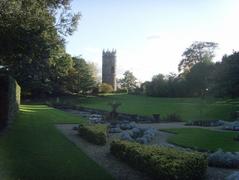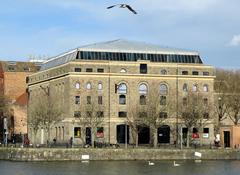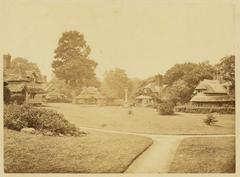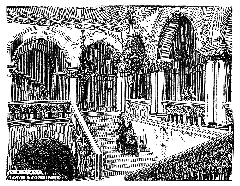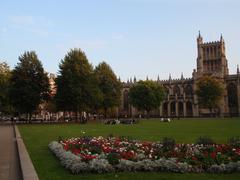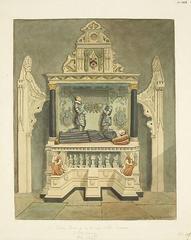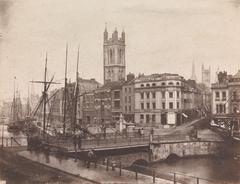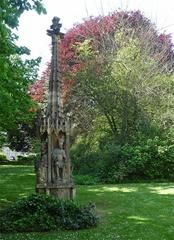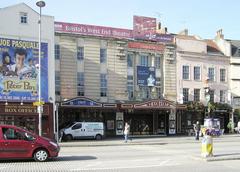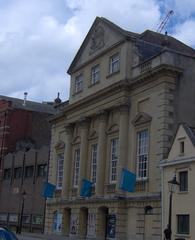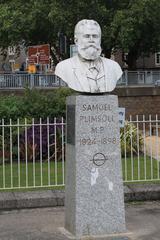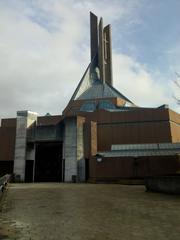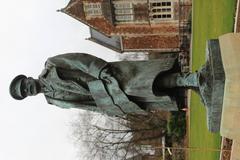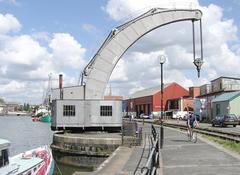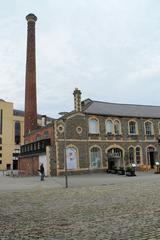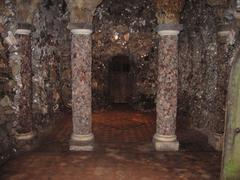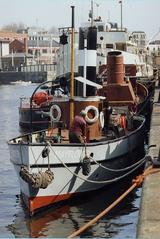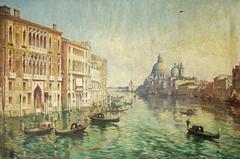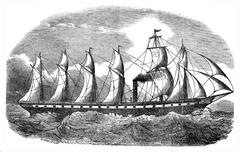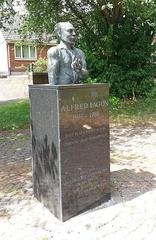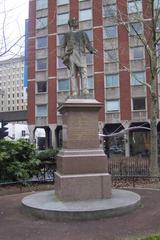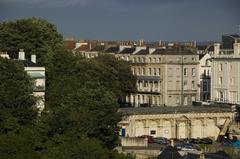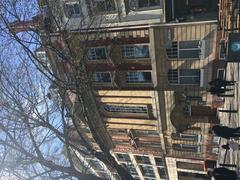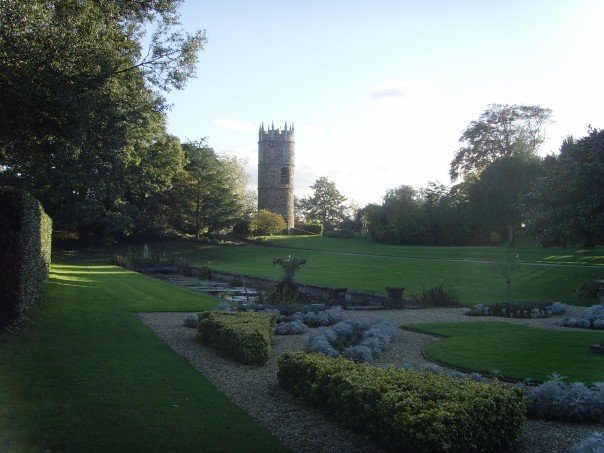
Goldney Hall Tower: Visiting Hours, Tickets, and Historical Guide to Bristol’s Hidden Gem
Date: 14/06/2025
Introduction
Goldney Hall Tower, set amidst the enchanting gardens of Clifton in Bristol, is a striking example of 18th-century Gothic Revival architecture and landscape artistry. Once part of the Goldney family estate, this iconic tower not only reflects the creative ambitions of its original owners but also serves as a window into the city’s layered social history—including its connections to the Industrial Revolution and the transatlantic slave trade. Today, Goldney Hall Tower is preserved as part of the University of Bristol, with public access available during select guided tours. This guide provides comprehensive information on visiting hours, ticketing, historical context, accessibility, and travel tips to help you plan a rewarding visit to this remarkable heritage site. For official visiting details and bookings, please refer to the University of Bristol Goldney Garden Tours and the Quaker Garden Trail.
Contents
- Historical Background
- Origins and the Goldney Family
- Architectural Evolution
- Gardens and The Tower
- Later Ownership and University Era
- Cultural and Social Significance
- Visiting Information
- Opening Hours and Tour Availability
- Ticketing and Booking
- Accessibility
- Directions and Transport
- Nearby Attractions
- Visitor Facilities
- Photography and Filming
- Interpretation and Educational Resources
- Conservation and Community Engagement
- Sustainability Initiatives
- Visitor Tips
- Frequently Asked Questions (FAQs)
- Summary and Final Recommendations
- Sources and Further Reading
Historical Background
Origins and the Goldney Family
Goldney Hall’s story begins in 1694 with Thomas Goldney II, a prosperous Quaker merchant and banker. The estate was purchased and expanded by the Goldney family, whose wealth derived from shipping, banking, and early industrial ventures such as Abraham Darby I’s Coalbrookdale Works—pivotal in the Industrial Revolution. The Goldney family’s financial activities included involvement in the transatlantic slave trade, a complex legacy now acknowledged and discussed during educational programming and public interpretation (Epigram – Goldney Hall Renaming Debate).
Architectural Evolution
In 1724, the original house was partially demolished to make way for a new Georgian residence. The design, attributed to George Tully, embraced symmetry, sash windows, and classical proportions. In the mid-19th century, architect Alfred Waterhouse—famed for London’s Natural History Museum—extended and recased the house, blending Victorian elements with the Georgian core.
Gardens and The Tower
The 16-acre gardens, developed primarily by Thomas Goldney III from the 1730s, are renowned for their blend of formal and whimsical features:
- Gothic Tower: Built in 1764, this red sandstone structure with limestone dressings rises three stories, accentuated by Gothic pinnacles, pointed arches, and a distinctive octofoil window. Originally housing a steam engine, it supplied water to the estate’s elaborate features (citydays.com).
- The Grotto: A Grade I-listed shell-encrusted marvel, decorated with rare shells, quartz crystals (“Bristol Diamonds”), and sculptures including a stone lion and River God.
- Other Follies: The estate boasts a rotunda, orangery, ornamental canal, mock bastion, Corinthian columns, and a heritage orchard.
Later Ownership and University Era
The estate later passed to the Frys and Wills families, prominent figures in Bristol’s social and academic circles. In 1956, it became part of the University of Bristol’s student accommodation, with the gardens and architectural features protected as listed structures. The University has since engaged in ongoing preservation, community events, and educational programming.
Cultural and Social Significance
Goldney Hall Tower and its gardens have featured in television and film, including “Sherlock” and “The Chronicles of Narnia,” and continue to serve as a venue for university and community events. The estate’s layered history—spanning Quaker philanthropy, industrial innovation, and contested legacies—offers visitors a unique lens into Bristol’s evolving identity.
Visiting Information
Opening Hours and Tour Availability
Goldney Hall Tower and gardens are generally closed to the public except for pre-booked guided tours, which typically run from April to September, often on weekends or during Bristol’s Open Doors festival (University of Bristol Goldney Garden Tours). Each year’s schedule may vary; always check the latest updates before planning your visit.
Ticketing and Booking
- Tickets: Priced around £8–£10 per person, including expert-led tours and a guidebook.
- Booking: Advance online booking is required due to limited group sizes. Book via the University of Bristol or Quaker Garden Trail websites.
Accessibility
The gardens feature gravel paths, terraces, and uneven surfaces. While most outdoor areas are accessible, the tower interior is generally closed to visitors, and some features (like the grotto) are less suitable for those with limited mobility. Contact the University in advance for accessibility support.
Directions and Transport
- Location: Goldney Hall is located in Clifton, approximately 1.5 miles from Bristol city centre.
- By Public Transport: Accessible via Clifton Down railway station (15-minute walk) and local bus routes.
- By Car: On-street parking in Clifton is limited. Visitors are encouraged to use public transport or cycle.
- Nearby Amenities: Clifton Village offers cafés, restaurants, and shops (Visit Bristol – Clifton).
Nearby Attractions
Combine your visit with other Clifton highlights:
- Clifton Suspension Bridge
- Brandon Hill Park
- Bristol Museum & Art Gallery
- Clifton Observatory
Visitor Facilities
Facilities are limited due to the site’s primary function as university accommodation. Toilets are available during open days; temporary refreshment stands may operate at events. For food and drink, head to nearby Clifton Village.
Photography and Filming
Personal photography is encouraged during tours. Commercial photography or filming requires advance permission from the University (Visit Bristol – Film & TV).
Interpretation and Educational Resources
Interpretive signage, workshops, and expert-led tours provide rich context on the estate’s architectural features, landscape design, and social history. The University and local groups occasionally offer lectures and educational events, including transparent discussion of the estate’s links to slavery (Epigram – Goldney Hall Renaming Debate).
Conservation and Community Engagement
The University of Bristol leads ongoing restoration, masonry stabilization, and garden conservation projects. Community volunteer programs support biodiversity and heritage preservation (citydays.com).
Sustainability Initiatives
Heritage management includes sustainable practices to reduce environmental impact and promote biodiversity within the grounds.
Visitor Tips
- Book Ahead: Secure tickets early for guided tours, especially during spring and summer.
- Check Event Calendars: Tours are limited to specific dates; verify availability before your trip.
- Plan for Accessibility: If you have mobility needs, contact the University in advance.
- Respect Private Spaces: Portions of Goldney Hall remain private accommodation—please follow signage and tour guidelines.
- Bring Refreshments: Facilities are minimal; nearby Clifton Village has ample dining options.
- Combine Attractions: Make the most of your visit by exploring other Clifton landmarks and Bristol’s vibrant city centre.
- Visit in Bloom: Late spring and early summer showcase the gardens at their finest.
Frequently Asked Questions (FAQs)
Q: When can I visit Goldney Hall Tower?
A: The estate is open to the public only during guided tours, usually between April and September. Check the latest schedule on the official websites.
Q: How do I buy tickets?
A: Purchase tickets in advance online through the University of Bristol or Quaker Garden Trail websites.
Q: Is the Tower interior open?
A: The tower’s interior is generally closed to visitors, but it is a highlight of the guided garden tours.
Q: Are the gardens wheelchair accessible?
A: Many outdoor areas are accessible, but some features (like the grotto and tower) are not. Contact the University for detailed information.
Q: Is photography allowed?
A: Yes, for personal use. Commercial filming requires advance permission.
Q: Are refreshments available onsite?
A: No permanent facilities exist, but temporary refreshments may be available during events. Clifton Village nearby has many options.
Summary and Final Recommendations
Goldney Hall Tower is a gem of Bristol’s heritage, blending Gothic Revival architecture, whimsical landscape design, and a complex social history. The site’s shell-lined grotto, ornamental canal, and distinctive tower offer an immersive experience into 18th-century innovation and artistry. Public access is limited to guided tours—plan and book early for the best experience. Engage with the estate’s full historical narrative, including its challenging legacies, to deepen your appreciation. For up-to-date information, ticketing, and special events, consult the University of Bristol Goldney Garden Tours and Visit Bristol. Download the Audiala app for personalized guides, and follow social media channels for the latest updates on Bristol’s historical sites.
Sources and Further Reading
- University of Bristol Goldney Garden Tours
- Official Ticket Booking
- Bristol Tourist Information
- Goldney Hall Wikipedia
- Secret Bristol Grotto Tours
- Citydays: Goldney Grotto
- Bristol World: Secret Bristol Garden
- Quaker Garden Trail: Goldney Hall
- Epigram – Goldney Hall Renaming Debate
